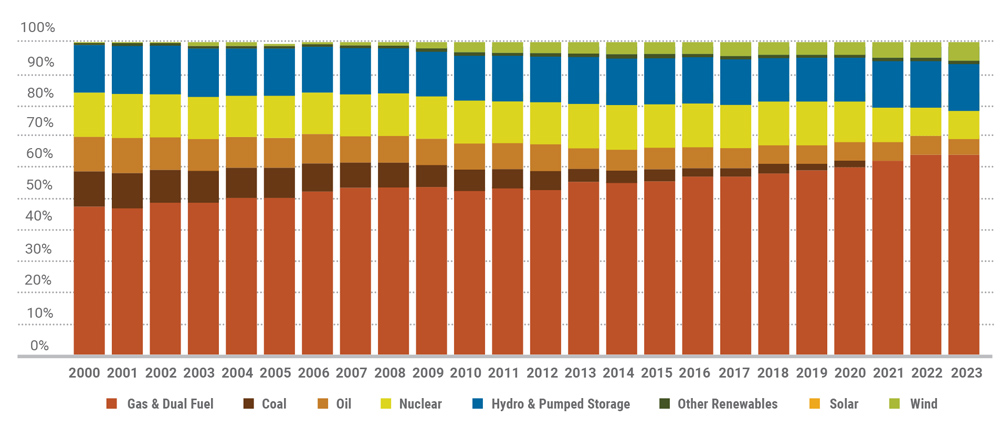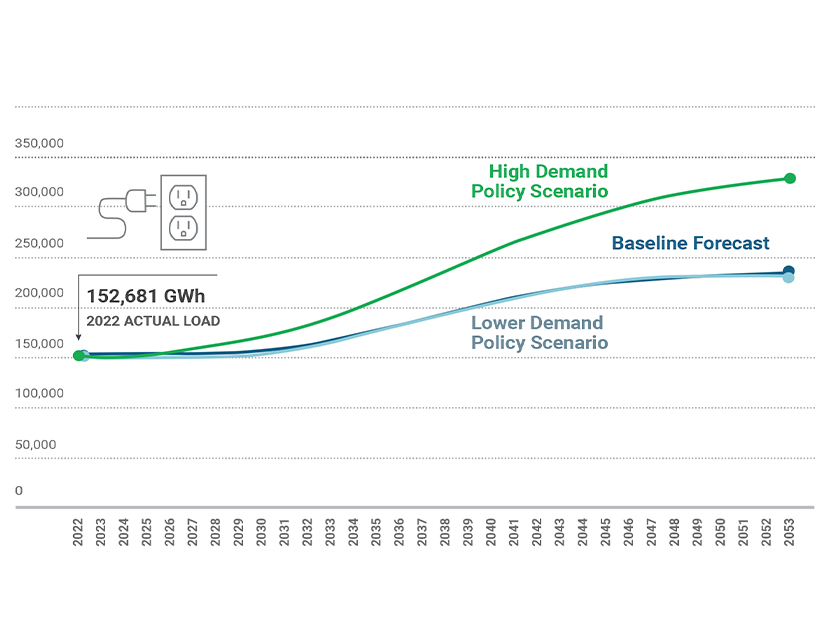NYISO CEO Rich Dewey on Wednesday told reporters that anticipated fossil fuel-fired plant retirements could shrink reliability margins to the point that they may have to be delayed.
“We’ve got to be really careful not to prematurely retire resources if we don’t have replacement supplies at the ready,” Dewey said.
The comments came as part of Dewey’s presentation of the ISO’s annual Power Trends report, the findings of which were similar to those of last year’s: NYISO has its hands full as state public policies drive rapid fossil plant retirements, while the interconnection of new clean resources is not keeping up. (See NYISO 2022 Power Trends Report: Reliable Clean Energy Needed Quickly.)
“We’re mindful that the number of interconnection requests has quadrupled, but this is a priority for us, and we are doing everything we can to make sure this process is as efficient and effective as possible,” Dewey said.
To meet the goals of New York’s Climate Leadership and Community Protection Act, which mandates 70% of the state’s energy come from renewables by 2030 and its grid be 100% net-zero by 2040, more must be invested in the research and development of emissions-free resources that will be needed to replace the capabilities of the retiring traditional plants, the report says.
Dewey last month told attendees at a conference hosted by NY-BEST, a battery storage consortium, that dispatchable emission-free resources must be quickly introduced onto the grid, and NYISO is committed to developing the right price signals that incentivize these technologies to enter New York’s markets. (See New York Fine-Tuning its Market for Energy Storage.)
NYISO has a “robust portfolio of new market enhancements that recognize the pricing signals that are necessary to attract the right resources to the right locations on the grid,” Dewey said Wednesday.
 Figure showing transition to winter peaking system | NYISO
Figure showing transition to winter peaking system | NYISO
Other findings discussed during the conference also were familiar: a rise in carbon dioxide emissions partly attributed to the deactivation of the Indian Point nuclear power plant (21-01188); an acknowledgement that electrification will create higher demand and shift the grid to a winter-peaking system; and that unbottling intermittent resources via transmission upgrade investments can help bring upstate energy downstate to offset fossil fuel retirements.
“New York has enjoyed a surplus of energy supply over the last few decades, and that surplus has allowed us to manage the grid through contingencies and severe weather events,” Dewey said, “but as supply margins shrink, it has become more complicated and tighter operationally to make sure we can maintain and balance reliability.”
“Given that the number of deactivations has outpaced the number of new additions, that balance has come into sharper focus, and as [NYISO] looks forward, we are mindful of assessing and evaluating planned deactivations to ensure we maintain the tight balance necessary to operate the power grid,” he added.
 Historical generating capacity for New York from 2000 to 2023 | NYISO
Historical generating capacity for New York from 2000 to 2023 | NYISO
Multiple reporters asked NYISO about thinning reliability margins across the state and what is the level of concern.
Dewey conceded that NYISO expects to see available megawatts shrink as fossil fuel plants retire and that the ISO needs to better understand whether these plants may need to remain in operation.
“It seems likely that some component of those peakers that are targeted for retirement would need to stay on,” Dewey added, “because it seems unlikely that we’ll have enough market-based solutions to eliminate the need for some element of those peakers to be extended for some period of time.”
In response to a question about the Public Service Commission opening a review process that could expand the role of nuclear and other technologies (15-E-0302), NYISO Executive Vice President Emilie Nelson said, “The incredible diversity [New York] has on supply-side technologies today is something that [NYISO] looks forward to seeing in the future years. We need a combination of technologies that can operate on the grid to really continue providing reliability day-in and day-out, so we look forward to exploring all technologies.” (See NY Renewable Portfolio May Come up Short on Getting to Net Zero.)

